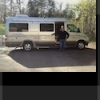
For those who have not been able to make the trip (and we highly recommend that you do), we are happy to present a video tour for you on what it takes to build the #1 selling Class B Motorhome in North America.
Jennifer and I spent two weeks in Kitchener, documenting the process every step of the way. We put the drone up for aerial photos and used three cameras (including a time lapse camera) to get shots in, around, under and above the entire conversion of a bare nose, stripped-down van into a fully-equipped cutting edge Class B motorhome.
Along the way, we met many of the 260 Roadtrek employes and learned that the average start-to-finish time is a little over six days. The one we followed, because of some options, took nine days.
Every Roadtrek is built with passion, pride, quality, technology and just pure love of the product, check out the video to get a glimpse of how it all comes together.
We finished this project even prouder to drive a Roadtrek.
We hope you enjoy the video!
At the Roadtrek factory in Kitchener, Ontario, Canada
- Read more...
- 0 comments
- 1674 views

